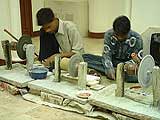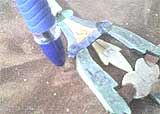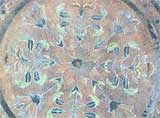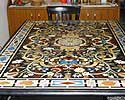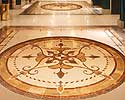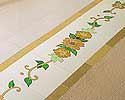Marble Inlay Work, an
introduction & history
What is Inlay Art?
One of the most attractive work of art that comes from marble is
"Marble
Inlay" work. It is the same work that adorns the Taj
Mahal and
other Mughal monuments.
It is a closely protected
traditional art and only a few expert exponents are available
today. The delicate process involves cutting and engraving marble
shapes manually. To start with, a predefined pattern e.g., floral
design or geometrical design is engraved on the marble slab. Small
pieces of marble of different shades are cut delicately to fit in
these grooves precisely. These small pieces are then slipped in
the grooves. Apart from marble, many other materials can also be
used.
History of Inlay Art:
Inlay work on delicate precious stone began in the workshops
of Florence in Italy around the end of the 16th century. This was
known as PIETRA DURA.(Pietra= Stone, Dura= Hard) The Italians
had created a classic artistic form and held a monopoly over it.
From 1630 onwards pietra dura appeared on moveable, small objects
as decorative panels, with bird and flower motifs, suitable for
cabinet fronts and table tops. Some of these soon reached the Mughals in the form of presents.
Of all the Mughal Emperors, Shah Jahan was the greatest
patron of architecture in India. For him no
amount of money or time was too much to create enduring,
everlasting architectural beauty and through it be remembered
always. It is in his buildings that one feels most compelled to
make the connection between Mughal art and pietra dura. The Taj
Mahal, the cenotaphs of the Emperor and his wife, the main floor
and the surrounding marble railings bear very close resemblances
to the pietra dura form.
Process of Inlay Art:
Bases:
We mostly use two types of bases, White Marble and Black Stone (Kadappa
this is Sandstone).
We can also use other colored bases such as Green Marble, as per
buyerಥquirement. Inlay on White Marble gives a Royal touch
where as Black Stone gives a very attractive look.
Types of bases we used: 1) White Marble (Makrana, Rajasthan
india)
2) Creama Marble (Italy)
Inlay natural stones:
A design, be it a floral or geometrical motif is cut out on a
brass sheet. This is then placed on marble, drawn and then the
marble is carved out. Slices of Colored stones, which have in
the meantime been shaped and polished, are then laid into the
marble with adhesive.
There are almost 30 types of color stones available. Sometimes a
heat treatment is given to particular stone to get a shading
effect, e.g. heating Jaisalmer (Yellow) stone to get a red
color.
Types of natural stones normally used for inlay :
1) White Jasper
2) Chocolate Stone
3) Green Marble
4) Sang-a- Mariam
5) Tiger Stone
6) Red Jasper
7)Lapis
8) Green Aventurine
9) Brown Bidasar
10) Black Onyx
11) Yellow Aventurine
12) Green Bidasar
13) Yellow Bidasar
14) Cobra Stone
15) Malachite
16) Ruby
17) Jaiselmer Red (Heated)
18) Dark Green Bidasar
19) Creama Marble
20) Jaiselmer Yellow
21) Alikantak
22) Green Laventure
23) Torques (Firoza)
24) Amethyst
All of these are natural stones, we do not prefer Synthetic
stones, but can be used according to buyerಥquirement.
Polish:
When Inlay work has been completed and it has dried, the surface
and edges are polished to give a shiny finish. The polish work
is being done by stone bar so as to give a long lasting shine.
Packing:
After the Table Tops being polished now they are ready for
packing. We prepare wooden pallets (Keeping safety in mind).
Table tops are being covered by thermacol sheets from all sides
including corners also.
|
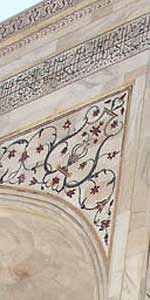 |






